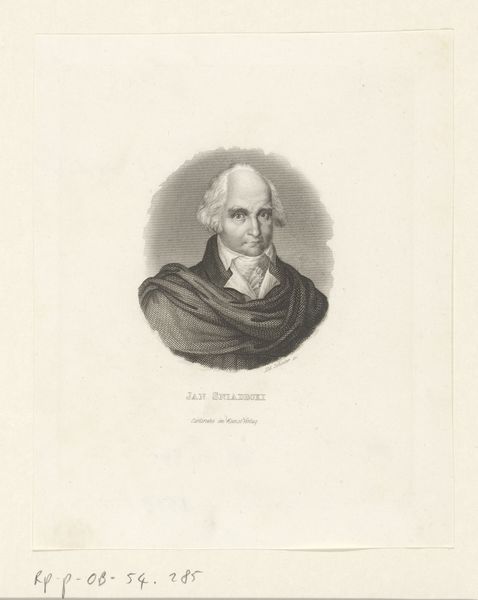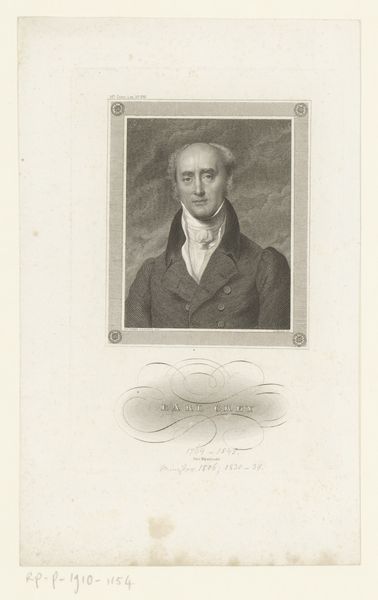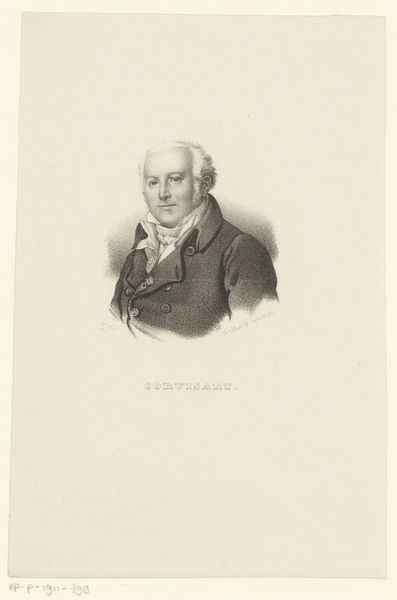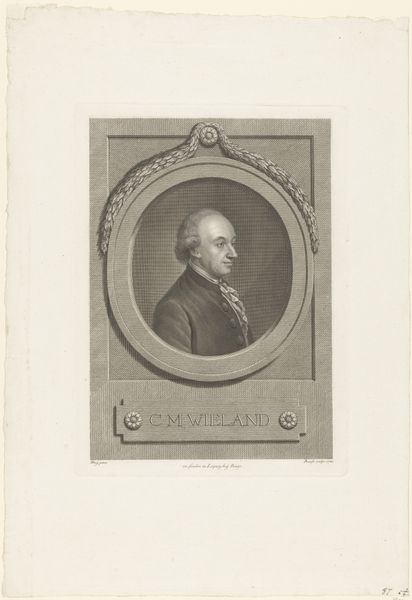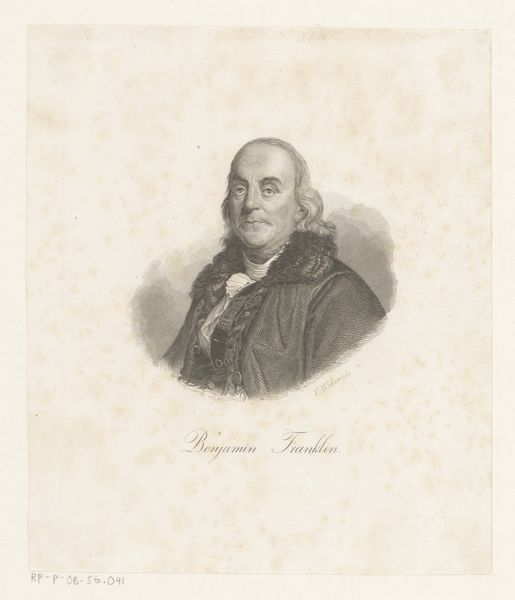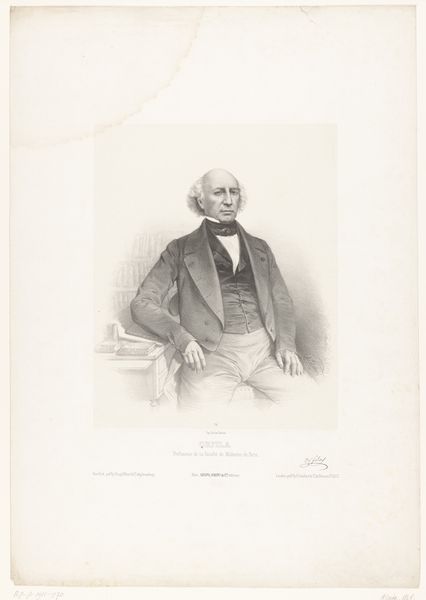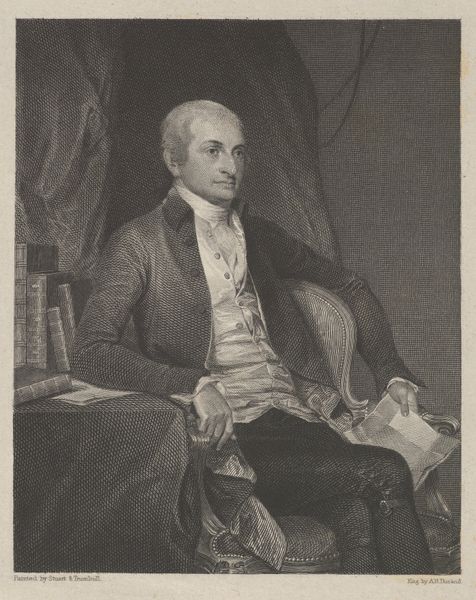
drawing, pencil
#
portrait
#
pencil drawn
#
drawing
#
neoclacissism
#
pencil sketch
#
caricature
#
portrait reference
#
pencil drawing
#
pencil
#
portrait drawing
Dimensions: height 517 mm, width 344 mm
Copyright: Rijks Museum: Open Domain
Curator: Let's talk about Nicolas Maurin’s "Portret van Pierre-François-Léonard Fontaine," a neoclassical portrait likely rendered between 1825 and 1842 using pencil. Editor: Oh, he looks like he knows all the secrets of the universe, doesn't he? A little stern, maybe, but distinguished. You can practically feel the weight of history radiating from his tailored coat. Curator: It’s quite fitting, given that Fontaine was a prominent architect. Maurin's use of pencil creates subtle gradations, really capturing the texture of the sitter’s coat and the slight softening around his features as the artist tried to soften his angular face to humanize him. Think about the accessibility of pencil as a medium—portable, relatively inexpensive, enabling a directness between the artist and subject. Editor: Exactly! It feels incredibly intimate, doesn’t it? Almost like catching a fleeting glimpse of him during a quiet moment. There's a vulnerability there that you wouldn't expect in a formal portrait. Curator: That’s interesting that you pick up vulnerability. To me it really reflects the kind of formal taste expected from public figures that Maurin played up to endear them to an admiring public. The means of production matter: portraiture during this era served as a form of documentation, of enshrining social status, and of circulating specific ideals of masculine power through printmaking, which is suggested in the style here, enabling a wider distribution of his image. Editor: Well, perhaps I'm projecting a bit! I just can't help but imagine what he was like in his private moments. Did he ever crack a smile? Did he doodle in his margins? All speculation, of course, spurred on by the accessible qualities you are suggesting of the artist medium, the pencil. Curator: Precisely, and how the use of material allows such projection. The texture that the pencil facilitates creates shadows on the paper, literally materializing this history we are reflecting upon. It underscores how the portrait, while seemingly straightforward, is very much constructed and manufactured through carefully rendered line work. Editor: It’s a good reminder that even the most seemingly objective portrayals are filtered through the artist's eye and the constraints and opportunities of the material. It certainly makes you think about the labor that went into constructing his persona and projecting his authority as well. Curator: Yes. Editor: It has been great looking at Fontaine through a Materialist's eye.
Comments
No comments
Be the first to comment and join the conversation on the ultimate creative platform.



